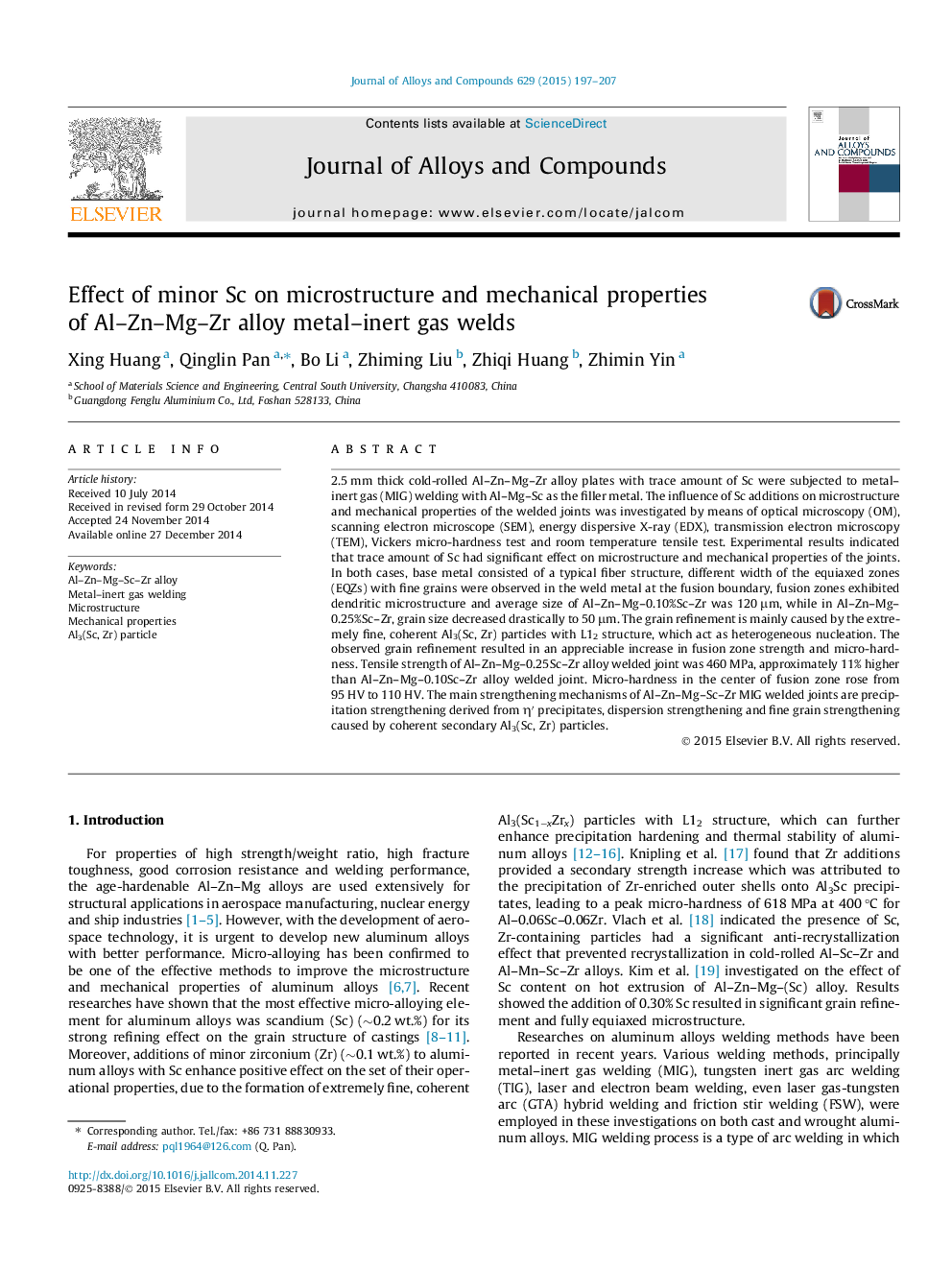| Article ID | Journal | Published Year | Pages | File Type |
|---|---|---|---|---|
| 1609736 | Journal of Alloys and Compounds | 2015 | 11 Pages |
Abstract
2.5 mm thick cold-rolled Al-Zn-Mg-Zr alloy plates with trace amount of Sc were subjected to metal-inert gas (MIG) welding with Al-Mg-Sc as the filler metal. The influence of Sc additions on microstructure and mechanical properties of the welded joints was investigated by means of optical microscopy (OM), scanning electron microscope (SEM), energy dispersive X-ray (EDX), transmission electron microscopy (TEM), Vickers micro-hardness test and room temperature tensile test. Experimental results indicated that trace amount of Sc had significant effect on microstructure and mechanical properties of the joints. In both cases, base metal consisted of a typical fiber structure, different width of the equiaxed zones (EQZs) with fine grains were observed in the weld metal at the fusion boundary, fusion zones exhibited dendritic microstructure and average size of Al-Zn-Mg-0.10%Sc-Zr was 120 μm, while in Al-Zn-Mg-0.25%Sc-Zr, grain size decreased drastically to 50 μm. The grain refinement is mainly caused by the extremely fine, coherent Al3(Sc, Zr) particles with L12 structure, which act as heterogeneous nucleation. The observed grain refinement resulted in an appreciable increase in fusion zone strength and micro-hardness. Tensile strength of Al-Zn-Mg-0.25Sc-Zr alloy welded joint was 460 MPa, approximately 11% higher than Al-Zn-Mg-0.10Sc-Zr alloy welded joint. Micro-hardness in the center of fusion zone rose from 95 HV to 110 HV. The main strengthening mechanisms of Al-Zn-Mg-Sc-Zr MIG welded joints are precipitation strengthening derived from ηⲠprecipitates, dispersion strengthening and fine grain strengthening caused by coherent secondary Al3(Sc, Zr) particles.
Keywords
Related Topics
Physical Sciences and Engineering
Materials Science
Metals and Alloys
Authors
Xing Huang, Qinglin Pan, Bo Li, Zhiming Liu, Zhiqi Huang, Zhimin Yin,
